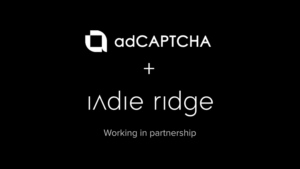By Peter Ballard, Founder, Foolproof
Despite the opportunities provided by emerging technologies, a third of UK businesses freely admit they are ‘too slow’ when it comes to adopting new tech.
Too often businesses of all sizes spend too long deliberating when presented with a competitive threat or new opportunity. Oftentimes, these threats or opportunities are enabled by new tech, or the changes in customer behaviour it causes. With the boardrooms of Britain dragging their heels, this creative approach is failing to translate to action and new research suggest that while businesses value the importance of design, they are less willing to involve creatives at board level.
And yet, creative and digital agencies already have the solution to this problem: design thinking.
Design thinking: a definition
Design thinking is by no means a new approach: it is a well-established and much respected method for creating new and improved products and services. The beauty of design thinking is that it’s not just for designers. It applies the principles of design to other areas of business decision making.
The design thinking approach is customer-centric, and spends a lot of time coming to the heart of their pain-points, before testing developed proof of concepts (PoC) and prototypes.
This customer-centric approach increases satisfaction for the end user. Too many ideas start from inside-out thinking rather than outside-in. This means ideas are rooted in the art of what is possible, or what a new technology can do, or what clever new product feature a product team has dreamed up, rather than starting with a customer need.
When this happens ideas can get a long way down the road, with a lot of sunk time and effort and emotional investment. Design thinking can therefore save time and money. Its resolution in a tangible PoC also brings a number of benefits. It increases speed to market by kickstarting projects into action. Its tangible nature also helps align teams, allowing them to develop a common understanding of the goal.
Analysis paralysis
Of course, these great rewards are only reaped when design thinking translates to doing. Many businesses — well aware of the merits of design thinking — are unable to translate design thinking into positive action as it’s yet to make its way into the boardroom.
Board level decision making is still bogged down in the traditional approach to strategic planning. The majority of time and resources are put into gathering the traditional inputs of competitive analysis, identifying the addressable market, market research, customer segmentation exercises, SWOT analysis, and financial modelling.
With this tendency towards over analysis, businesses may be rendered immobile by strategising. Very little time is spent creating a vision for the customer or end-user experience desired, and validating whether the experience delivered in this way will meet the needs of the customer, and create true differentiation or value for both customer and the business.
One of the best ways businesses can overcome analysis paralysis is by turning the design thinking on its head: roll up your sleeves and stop searching for information. In other words, design doing. Start backwards with a prototype or PoC, and use this to flesh out the strategy.
Design thinking in action: a case study
Foolproof recently used this ‘design action’ approach on a project for one of the UK’s oldest private banks. The CTO had been asked to prepare a five year IT strategy and investment plan, yet he had found a number of conflicting visions and ideas within the management board of what types of technology should be invested in within this time frame. He asked us to help the business create a vision for the future customer and staff experience, so that the management board could agree and align around this vision, which could then be used as the basis for an experience and technology roadmap.
In the space of 8 weeks, we worked with customers, prospects and staff within the bank to create a PoC of a few key customer journeys showing how a future experience could innovate and differentiate the bank from its competitors, and deliver against some customer aspirations and needs. By producing a tangible representation of those future journeys, the board were quickly able to align and agree the direction, and the CTO was able to move forward with his 5 year strategy, and kick off the ideation required for the first activities on the roadmap. In just a few weeks the bank had jumped ahead from a place it had been stuck on for months previously.
By producing a tangible representation of those future journeys, the board were quickly able to align and agree the direction, and the CTO was able to move forward with his 5 year strategy, and kick off the ideation required for the first activities on the roadmap. In just a few weeks the bank had jumped ahead from a place it had been stuck on for months previously.
Practical steps for bringing design thinking into the boardroom
In our opinion, the key to taking design thinking and doing into the boardroom is the proof of concept.
- Don’t over analyse: get stuck in
To negotiate analysis paralysis, the traditional strategy and product design process needs to be turned on its head. Think of your PoC as the architect’s model: it should look and feel like the end version. A strategic roadmap can then be created off the back of your PoC.
2. Be realistic about timescales
Design thinking is known for its ability to increase speed to market. However, that doesn’t mean you will have a solution in a couple of months. A PoC isn’t going to come to life in three months but they can define your strategic direction over a 5-year plan. It serves as a point of aspiration, as opposed to immediate execution.
3. Don’t take your PoC as gospel
PoCs are great aspirational tools but they do not break down design in full, nor consider its technical feasibility. They are a piece to help stimulate imagination as opposed to a complete article which could be handed over to a development team.
4. Remember the business case
The beauty of the PoC is its power to unify stakeholder groups. In order to do this, your PoC must clearly signpost the business case for the project. Its power lies in its accessibility – its ability to translate strategic documentation into a design outcome that you can throw rocks at, knock down, and build back up.
5. Keep your customers at the heart
By locating the pain points in the existing experience, new opportunities to surprise and delight emerge. By focussing on core journeys, the investment of time and effort is minimised, yet the experience has enough depth and breadth to feel real to potential customers and users.











